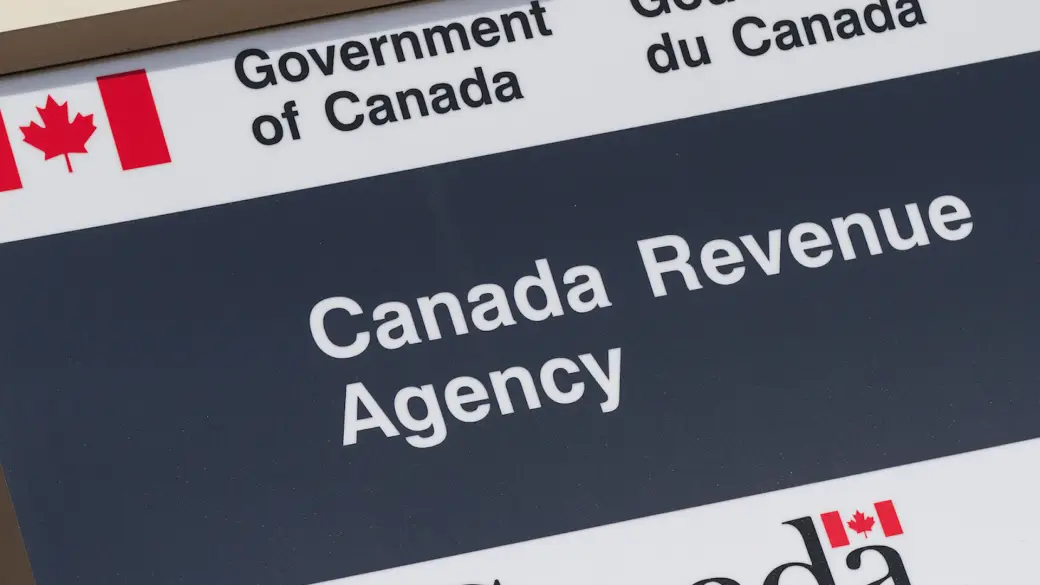Understanding the implications of exceeding HSA limits is crucial for safeguarding your tax strategies and avoiding unnecessary penalties. It’s not just about saving money; it’s about protecting your business or personal finances from CRA audits and sanctions. For a comprehensive look into contribution boundaries, visit our HSA Contribution Limits Canada 2025 guide, which has the latest legal limits and guidelines.
Introduction to HSA Limit Risks

HSA limits are set to ensure that benefits remain within a tax-advantaged scope. Exceeding these contributions in Canada, especially in 2025, can change tax-free benefits into costly audit triggers and penalties. Many incorporated professionals and small businesses mistakenly believe excess contributions won’t cause issues. However, CRA has strict rules, and non-compliance can lead to severe financial consequences.
The key to avoiding these pitfalls lies in understanding exactly where the boundaries are. Wellbytes provides tools such as Wellbytes CRM and a mobile app, which empower users to manage claims efficiently and remain within legal limits. With integrated compliance checks, Wellbytes helps businesses and professionals stay ahead of regulations and streamline their benefits management without risking tied selling traps or CRA penalties.
What Happens When You Exceed HSA Limits?

CRA’s “Reasonable” Limit Rules
According to CRA’s IT-339R2, HSA contributions—whether through Private Health Services Plans or similar benefits—must adhere to the “reasonable” standard. This typically means contributions should not exceed approximately 25% of your annual salary or business revenue, often between $10,000 and $15,000 annually per employee, and $1,500 for sole proprietors. These limits are designed to prevent abuse and ensure that benefits are genuinely health-related.
However, determining what is “reasonable” involves considering your specific situation. For example, an incorporated professional earning a higher income must tailor their contributions carefully, ensuring they don’t surpass the CRA’s threshold. Over-contributing beyond these limits triggers immediate questions from the CRA, risking audits, back taxes, and disallowed deductions which undermine the original benefit purpose.
Tax Implications of Over-Contributions
When someone over-contributes to their HSA, the excess amount doesn’t just go unnoticed. Instead, it is reclassified as taxable income, which can significantly increase your tax bill. For instance, an excess contribution of $5,000 could result in an added tax of approximately 35%, roughly $1,750, and it may also be subject to penalties up to 50% of the surplus. These penalties are meant to discourage misuse and to recover the government’s lost revenue from tax deductions that shouldn’t have been claimed.
This reclassification often surprises many, especially because the initial contribution may seem legitimate at first glance. Nonetheless, CRA’s audit mechanisms make it essential to track your contributions diligently to avoid these costly issues. Wellbytes offers a transparent claims management system that can alert you to potential over-contributions before they escalate into penalties, preserving your tax advantages.
Audit Risks and Consequences
Beyond tax penalties, exceeding HSA contribution limits increases the likelihood of CRA audits. Unreasonable contributions can flag your account for review, and if an audit finds that your claims or contributions don’t align with CRA rules, the agency might disallow deductions or even reclassify benefits as salary, which is taxable. Such audits not only create financial stresses but can also tarnish your professional reputation and complicate future benefits management.
Auditors scrutinize the rationale behind contributions, and non-compliance may result in disallowing otherwise legitimate claims. Therefore, staying within CRA’s boundaries is not just advisable but crucial. Wellbytes supports this with SOC2-certified claim reviews, ensuring that your benefit claims satisfy CRA’s strict standards and that your benefits are fully compliant with regulatory requirements.
Key Benefits of Staying Within HSA Limits

Preserving Tax Efficiency
One of the main advantages of adhering to contribution limits is maximizing tax benefits. Contributions within CRA limits entitle you to 100% corporate deductions and tax-free reimbursements for eligible expenses. For example, contributing $10,000 to an HSA could save a business around $3,500 to $5,250 in taxes, depending on the tax bracket, effectively reducing health-related costs while maintaining full tax efficiency.
Staying compliant also guarantees that reimbursements remain tax-free, which is a significant advantage for incorporated professionals and small businesses. Non-compliance can erode these benefits through penalties or disallowed claims, so it’s essential to operate within the established boundaries. Wellbytes’ platform helps users optimize contributions while staying within legal limits, making compliance straightforward and manageable.
Avoiding Penalties and Audits
CRA penalties for over-contribute to HSA accounts are steep, including reclassification of excess amounts and potential audits. These repercussions can cost thousands and threaten the validity of other claimed deductions. Staying within the CRA’s “reasonable” limits minimizes audit risk and results in a smooth benefits process without surprises.
Moreover, compliant HSA plans managed through platforms like Wellbytes offer additional security. Their SOC2 certification ensures that claim submissions are secure and adhere to CRA rules. Unlike some providers, which may tie sales to restrictive bundles or add hidden fees, Wellbytes maintains transparency and fairness, substantially reducing compliance risks.
Wellbytes’ Compliance Advantage
Wellbytes’ comprehensive approach to HSA administration offers a significant compliance advantage. Their proprietary CRM ensures accurate and compliant claims processing, while the mobile app enables real-time monitoring and claims submission, eliminating guesswork. Unlike competitors that might impose tied selling caps or restrictive bundle options, Wellbytes’ flexible platform allows you to customize your benefits structure freely, without risking CRA penalties.
By choosing Wellbytes, incorporated professionals and small businesses gain confidence that their HSA plans are not only tax-efficient but also fully compliant with CRA’s regulations, shielding them from costly penalties and future audits.
Real-World Examples of Exceeding HSA Limits

Incorporated Business in Ontario
Consider an Ontario-based business that contributed $20,000 per employee to their HSA in 2025, well beyond the recommended 25% of salary limit. Such over-contribution could lead to about $7,000 in taxable reclassification and penalties. By contrast, if the business utilizes Wellbytes’ system, they can keep contributions within CRA limits—around $12,000 for a typical salary—avoiding costly audits and penalties.
This preventive approach saves substantial amounts in taxes and keeps the benefit plan transparent and compliant. Having a reliable benefit platform ensures that contribution caps are enforced automatically, reducing administrative burdens and associated risks.
Sole Proprietor in British Columbia
A self-employed individual in BC might accidentally exceed the $1,500 limit for themselves and dependent claims, risking penalties and disallowed deductions. With Wellbytes’ platform, the individual can set clear contribution caps based on their actual income and expenses, ensuring adherence to CRA rules. This proactive strategy safeguards the individual from penalties and preserves their full tax benefits.
In both cases, the key is understanding contribution thresholds and actively managing them via compliant tools. Wellbytes’ user-friendly platform provides the necessary compliance framework and real-time support, ensuring users don’t inadvertently overstep legal boundaries.
| Scenario | Contribution (2025) | Penalty/Tax if Exceeded | Compliant Outcome |
|---|---|---|---|
| Incorporated Business | $20,000 (exceeds limit) | $7,000 in tax + penalties | $10,000-$15,000 within CRA limits |
| Sole Proprietor | $3,500 (exceeds limit) | $700 in tax + penalties | $1,500, staying within CRA boundaries |
Cost and Penalty Breakdown

Over-Contribution Penalties
The core issue with exceeding HSA contribution limits is the financial penalty imposed by the CRA. Excess amounts are taxed as income, and penalties for over-contribution can reach 50% of the surplus. For example, a $5,000 over-contribution at a 35% tax rate means an additional $1,750, plus potential penalties, quickly adding up.
Moreover, failure to correct over-contributions promptly can lead to sustained penalties and increased audit risk. Therefore, early detection and correction are vital. Platforms like Wellbytes facilitate this by providing clear weekly or monthly contribution tracking, enabling users to stay under limits and avoid these costly penalties.
Compliant Contribution Scenarios
Here’s an illustrative table:
| Text | Scenario | Contribution (2025) | Tax/Penalty if Exceeded | Compliant Outcome |
|---|---|---|---|---|
| Incorporated Business | $20,000 (exceeds limit) | $10,000-$15,000 | $7,000 tax + penalties | $10,000-$15,000 within CRA limits |
| Sole Proprietor | $3,500 (exceeds limit) | $1,500 | $700 tax + penalties | $1,500 within CRA limits |
Avoiding Hidden Costs
Many providers have hidden administrative costs, such as pharmacy fees or tied sales restrictions. Wellbytes offers a no-fee, transparent HSA platform designed to optimize your benefits without surprise charges. This transparency aligns with CRA requirements, helping users maintain compliant, cost-effective plans.
Check out our Avoid Hidden HSA Fees Canada guide to learn more about maintaining transparency in your health benefits.
Step-by-Step Guide to Avoiding HSA Limit Violations
Step 1: Review CRA IT-339R2 Guidelines
Begin your compliance journey by understanding the CRA’s definition of “reasonable” contribution levels. These guidelines consider factors such as your salary or business revenue (e.g., ≤25%), and for sole proprietors, a cap of $1,500 is typical. Knowing these limits sets the foundation for compliant benefits planning.
It’s essential to stay updated, as CRA does occasionally revise thresholds. Consulting the latest documentation, available through platforms like Wellbytes, ensures your strategies remain aligned with legal standards. Staying informed reduces the risk of accidental over-contributions and subsequent penalties.
Step 2: Calculate Safe Contributions
Based on your salary or business expenses, determine your maximum contribution limits. Use accurate, up-to-date data and leverage tools provided by experienced providers like Wellbytes to make these calculations straightforward. Regularly reviewing your contributions ensures you remain within limits, especially as income fluctuates.
Whether you’re an incorporated professional or a sole proprietor, adjusting your contribution strategy annually assesses your financial situation and CRA rules. This proactive approach minimizes the risk of inadvertent overages and penalty exposure, maintaining your tax advantages.
Step 3: Select a Transparent Provider
Your choice of HSA provider is critical. Opt for those like Wellbytes that offer transparent fee structures, compliance guarantees, and flexible plan options. Avoid tied selling agreements that restrict your choices or impose unnecessary bundles, which could inadvertently lead to CRA violations.
A trusted provider provides audit-proof claims processing, real-time compliance alerts, and clear documentation. This minimizes your administrative burdens and helps maintain full eligibility for tax deductions and reimbursements.
Step 4: Document and Monitor
Accurate documentation of expenses, contributions, and claims is key. Keep detailed records to support CRA audits and verify that contributions have not exceeded prescribed limits. Utilize the Wellbytes mobile app for real-time tracking, and set annual reminders for review.
Implementing a schema markup in your internal policies can help organize your documentation. Regular monitoring ensures adjustments are made promptly if updates or income changes occur, thereby safeguarding your benefits and compliance status.
CRA Compliance and Common Mistakes

Ensuring Reasonable Contributions
Most claims fall into non-eligible categories when contributions exceed CRA thresholds. Over-contributions, especially if they cover non-eligible expenses or are tied to restrictive selling plans, risk disallowance of deductions. The cornerstone of compliance is ensuring over 90% of HSA funds cover approved medical expenses and stay within CRA boundaries.
An often overlooked aspect is the clarity of documentation and adherence to standards like IT-339R2. Regularly reviewing your claims and contribution strategies ensures you meet CRA’s “reasonable” criteria and avoid costly mistakes that could invalidate entire benefits plans.
Common Compliance Errors
Errors such as over-contributing, claiming non-eligible expenses, or relying on tied selling plans can flag your account for scrutiny. Misclassification of expenses or vague recordkeeping may also lead to disallowed claims during audits.
Utilizing systems that audit claims for CRA compliance, such as Wellbytes’ SOC2 certification, can substantially reduce these risks. Staying educated about tight restrictions and appropriate expense categories is also vital to safeguarding your benefits.
FAQs for Compliance
Q: What are HSA over-contribution penalties?
A: Excess contributions are reclassified as taxable income, with penalties reaching 50% of the surplus, plus interest.
Q: What’s the HSA tax audit risk?
A: The risk heightens if contributions surpass CRA limits, potentially resulting in the disallowance of deductions or reclassification as salary.
Q: How to avoid HSA compliance mistakes?
A: Employ trusted, audited platforms like Wellbytes to track contributions, admissions, and expenses, ensuring compliance and safeguarding benefits.
Conclusion
Exceeding HSA limits in 2025 poses significant tax and compliance risks that can transform your tax-free benefits into costly penalties or audits. By understanding CRA’s contribution rules, calculating permissible limits accurately, and selecting transparent, compliant providers like Wellbytes, professionals and small business owners can optimize their benefits while avoiding fines.
Staying within prescribed limits preserves the tax efficiency of your HSA, mitigates audit risks, and provides peace of mind. Leveraging tools such as Wellbytes’ CRM and mobile app streamlines compliance management, making it easier to maximize your health benefits legally. Investing in a compliant, flexible HSA plan now acts as a safeguard for your financial health in the future, simplifying your benefits strategy and ensuring CRA adherence.
Book a free consultation with Wellbytes today to help you design and manage your 2025 HSA contributions effectively, avoiding the costly repercussions of exceeding limits and ensuring your health benefits remain a true tax advantage. For more detailed regulations and expense eligibility, visit our HSA Eligible Expenses Canada.
